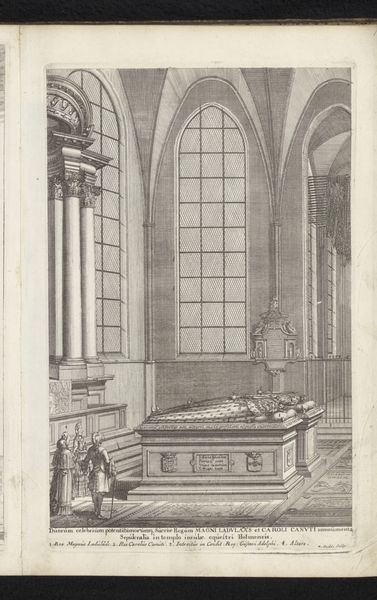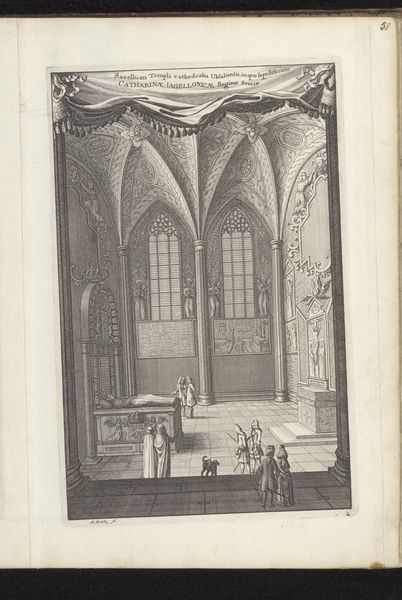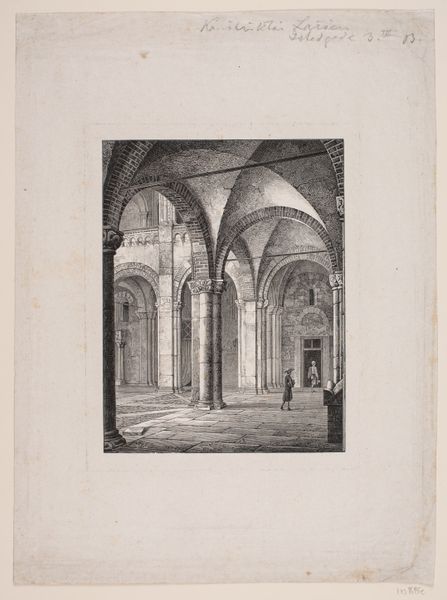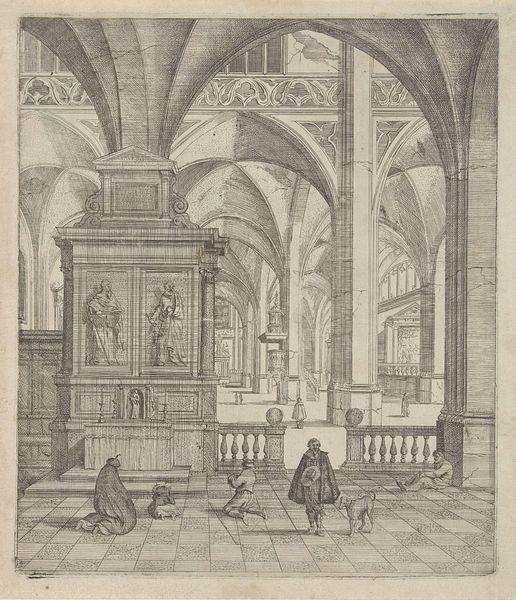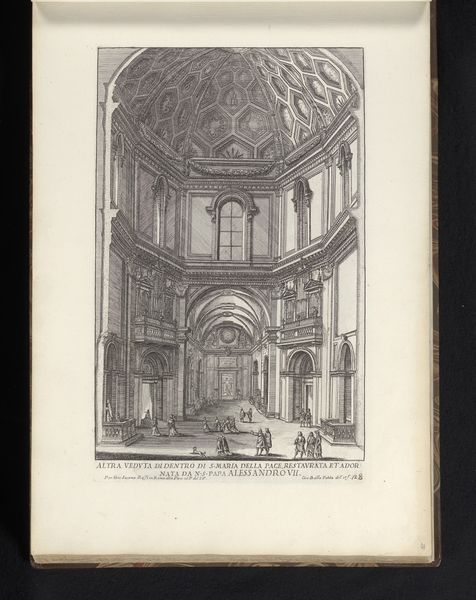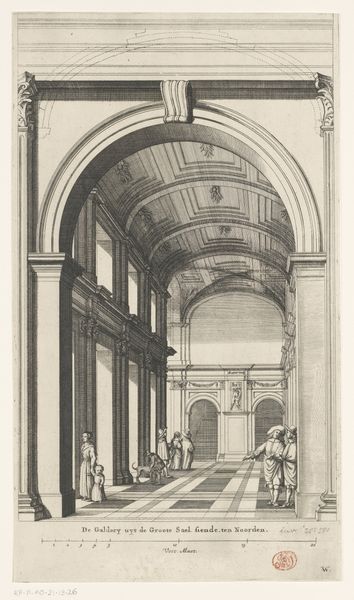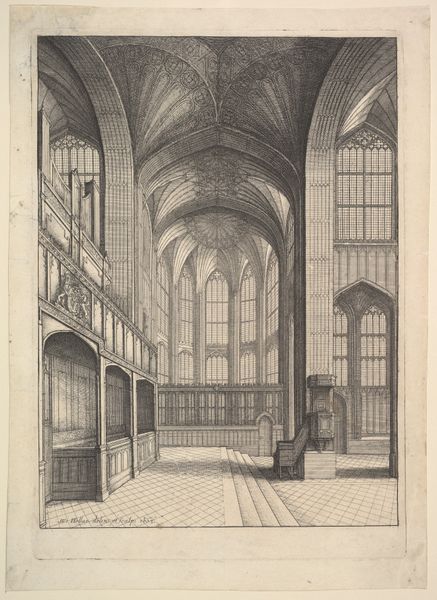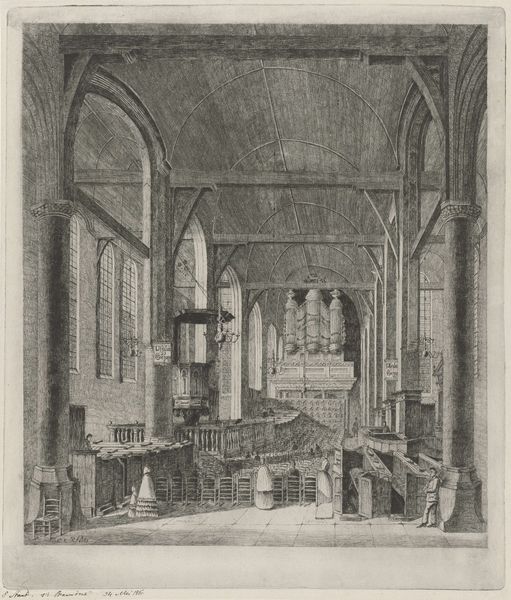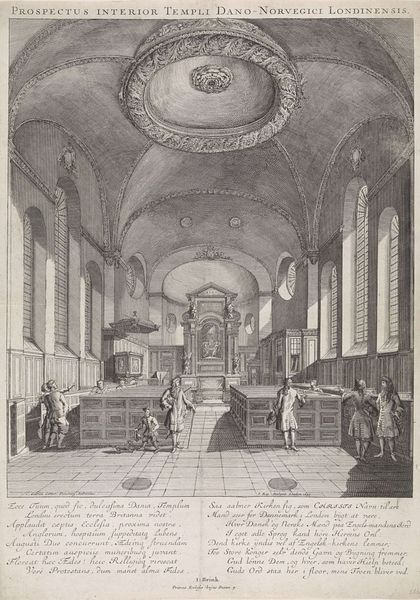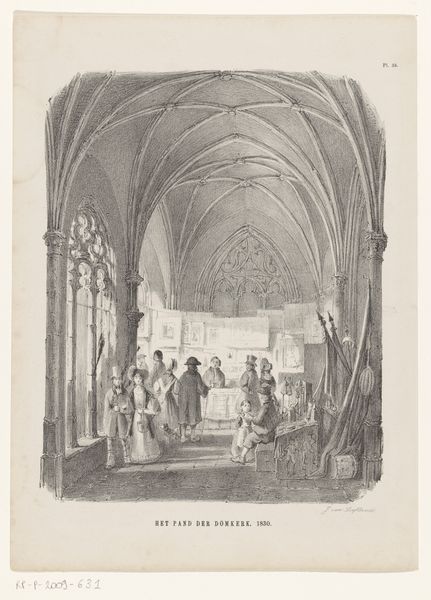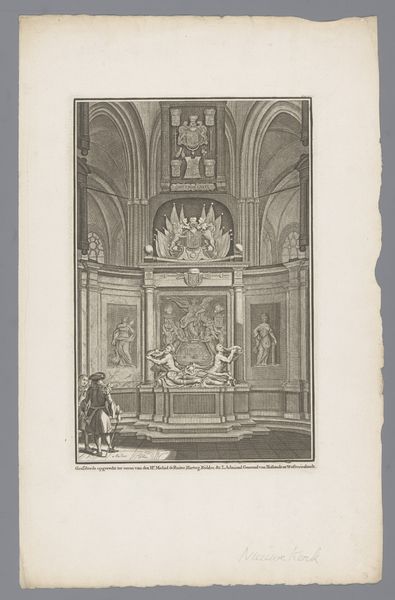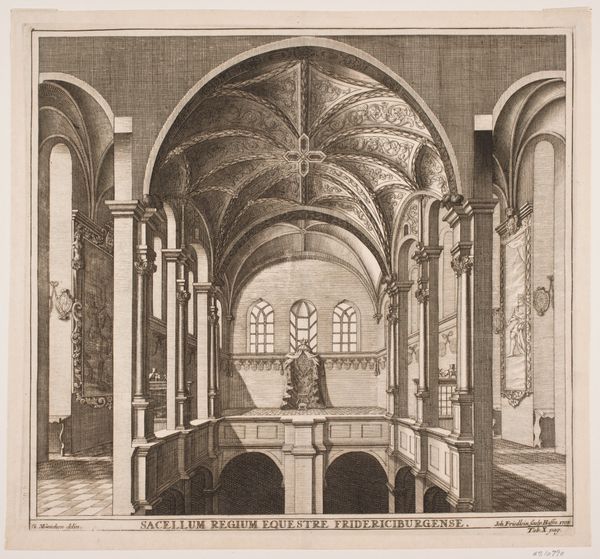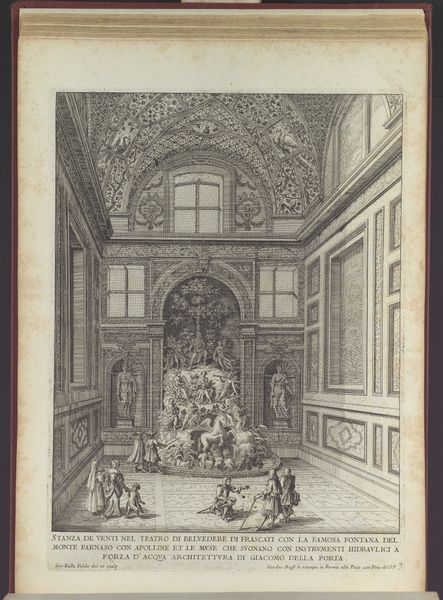
print, engraving, architecture
#
baroque
# print
#
history-painting
#
engraving
#
architecture
Dimensions: height 267 mm, width 171 mm
Copyright: Rijks Museum: Open Domain
This print of the Grafmonument van Gustaaf I van Zweden in the kathedraal van Uppsala was made by Erik Reitz using the technique of engraving. The linear quality so characteristic of this technique is everywhere apparent, from the crisply defined floor tiles, to the tracery of the windows. The entire composition is dependent on the skilled manipulation of a handheld burin, pushed through a copper plate to produce tiny, precise furrows in the metal. Ink would then be applied, and wiped from the surface, remaining only in those incised lines. A print could then be made, and this process repeated many times before the plate degraded. The engraving process allowed for the wide circulation of architectural images in the early modern era. The print is a record not only of a specific place and monument, but of a complex and painstaking mode of production. Considering the value of the materials, the labor, and the social context, we can understand more fully the significance of this artwork. It challenges any distinction between a mere reproduction and a precious, unique object.
Comments
No comments
Be the first to comment and join the conversation on the ultimate creative platform.
